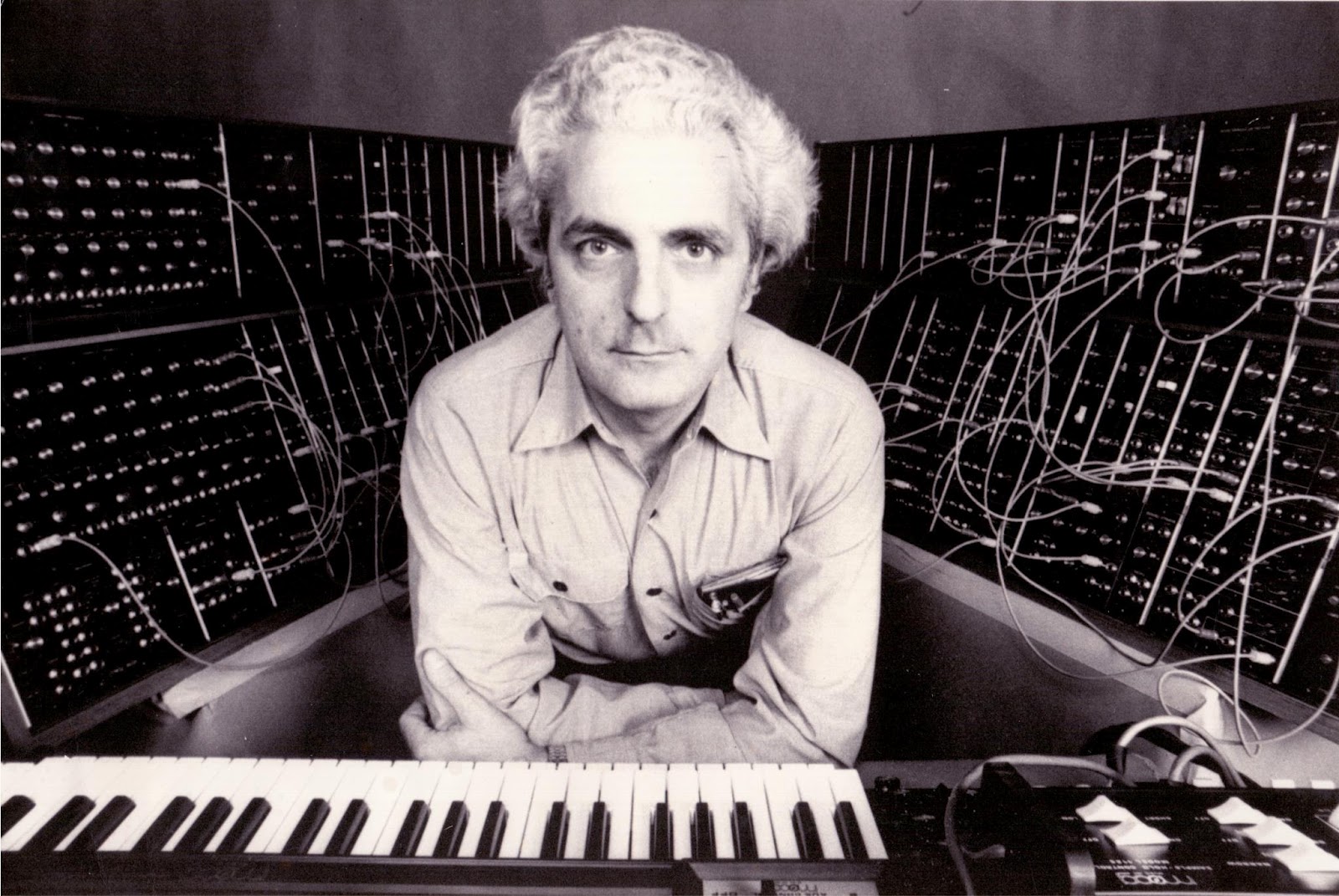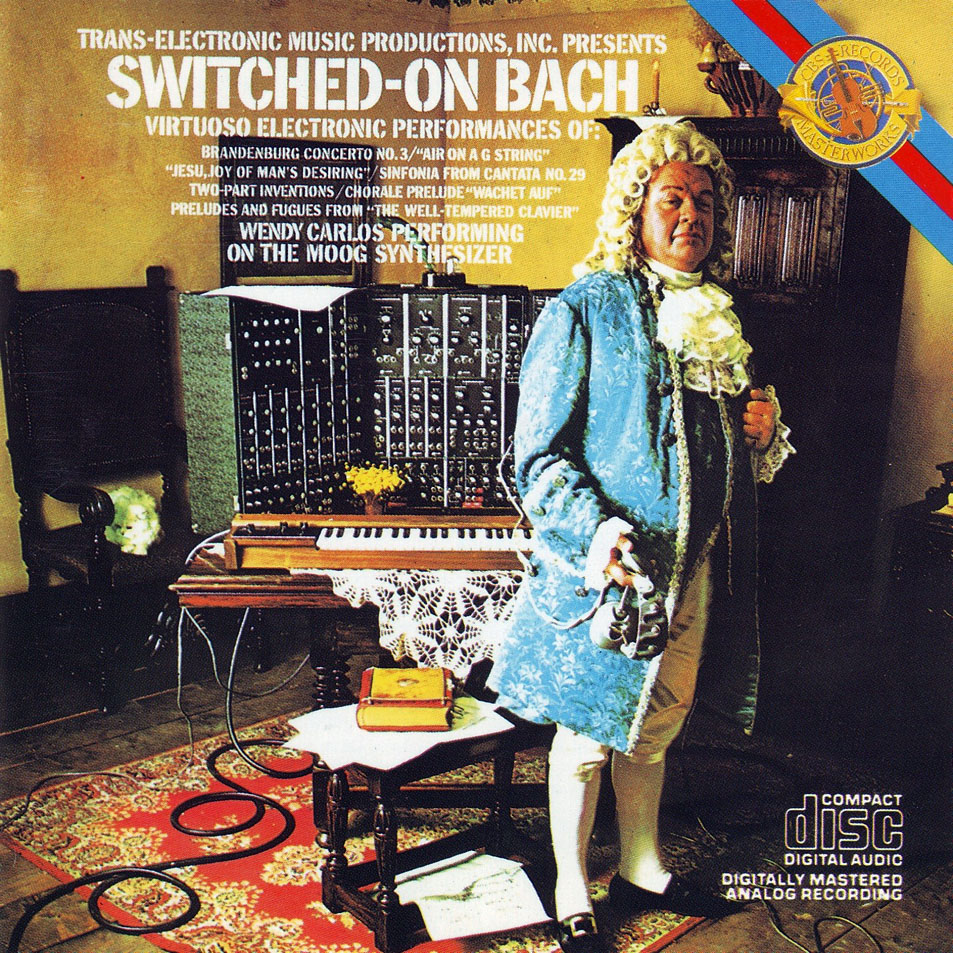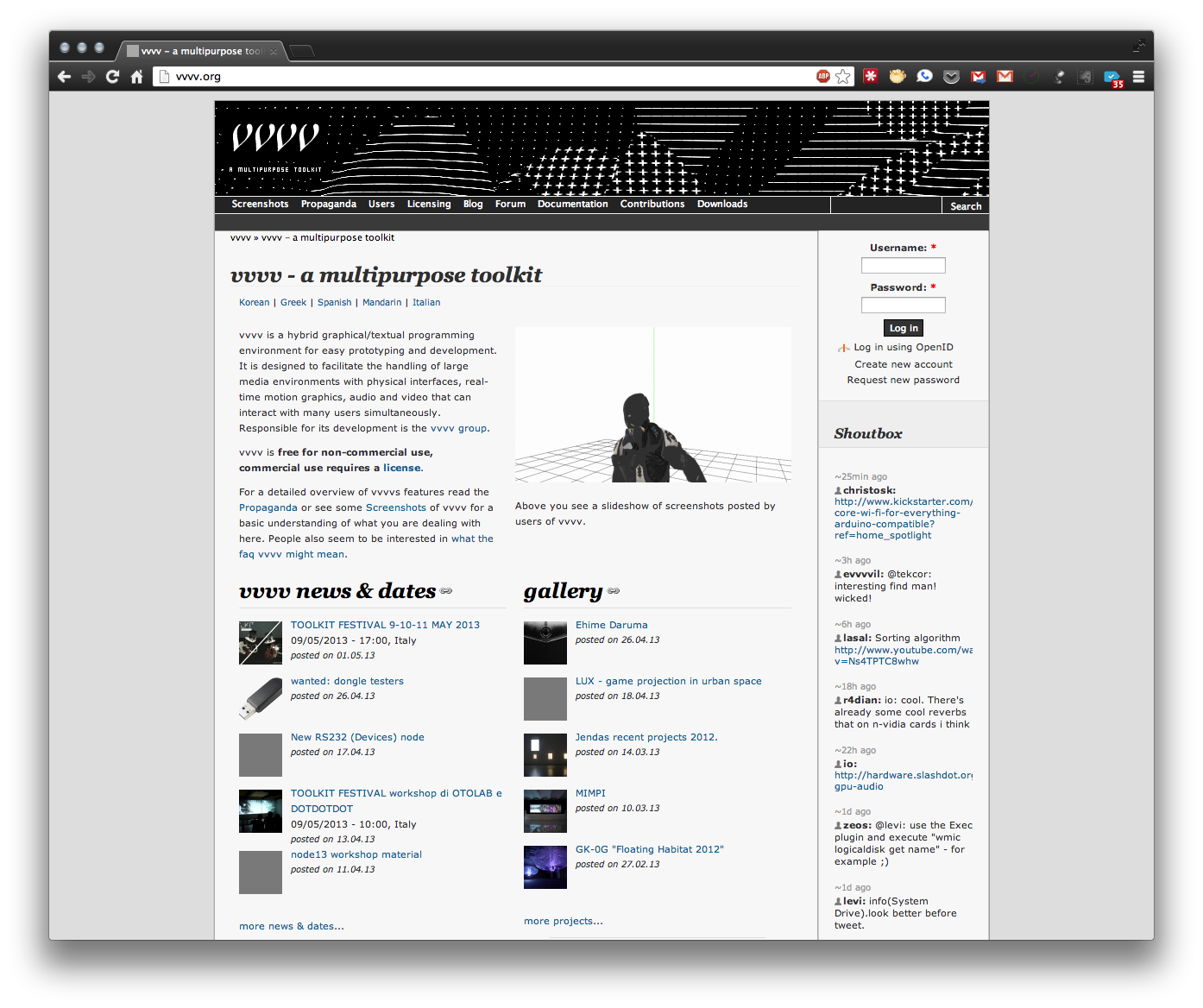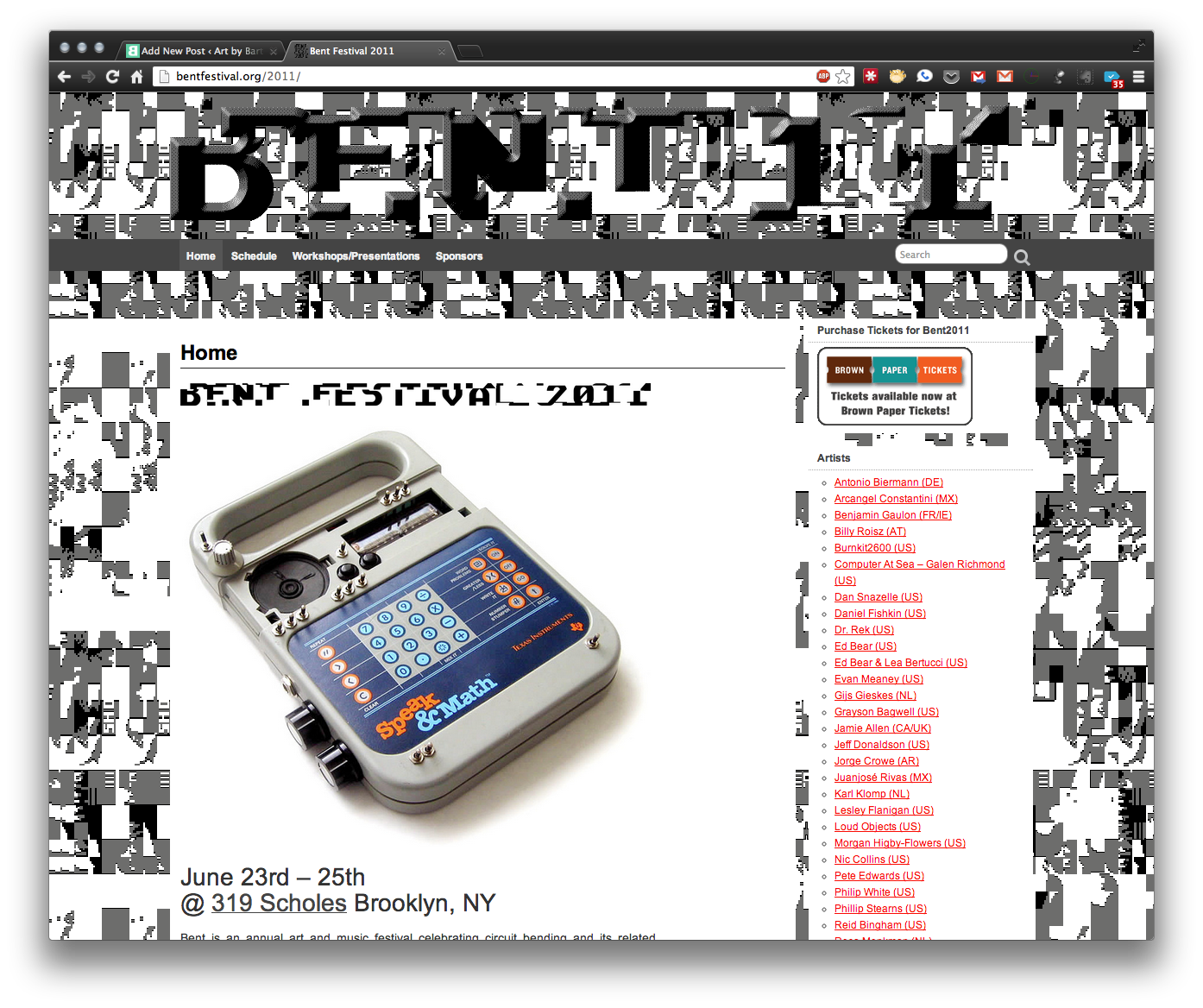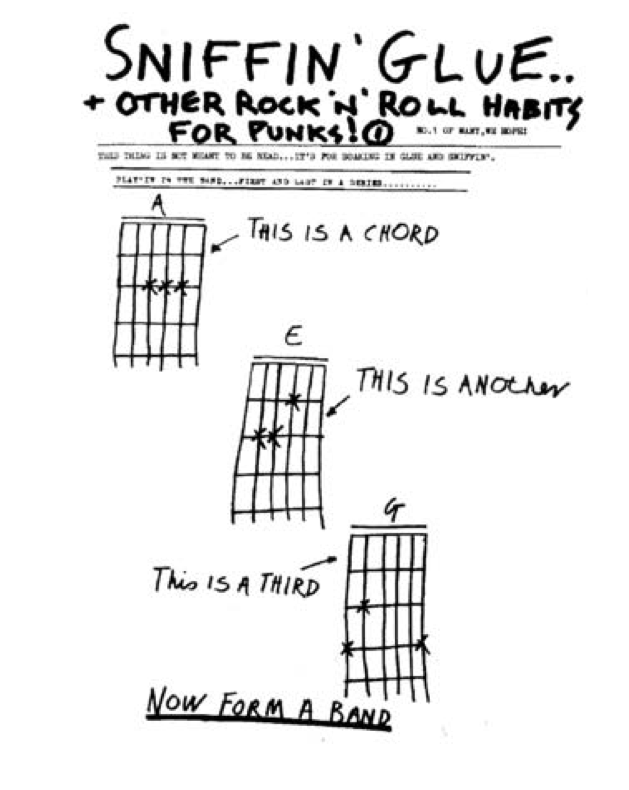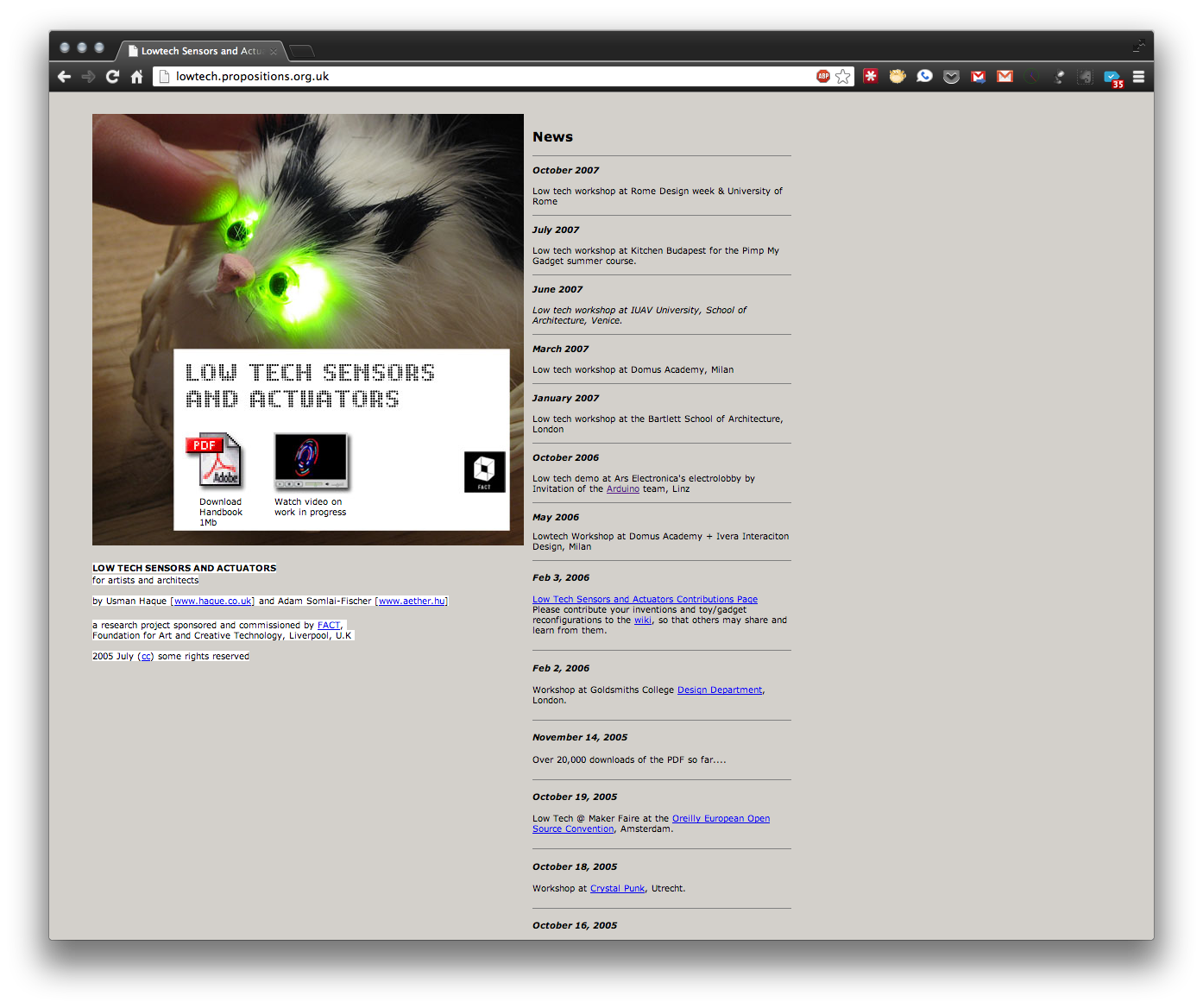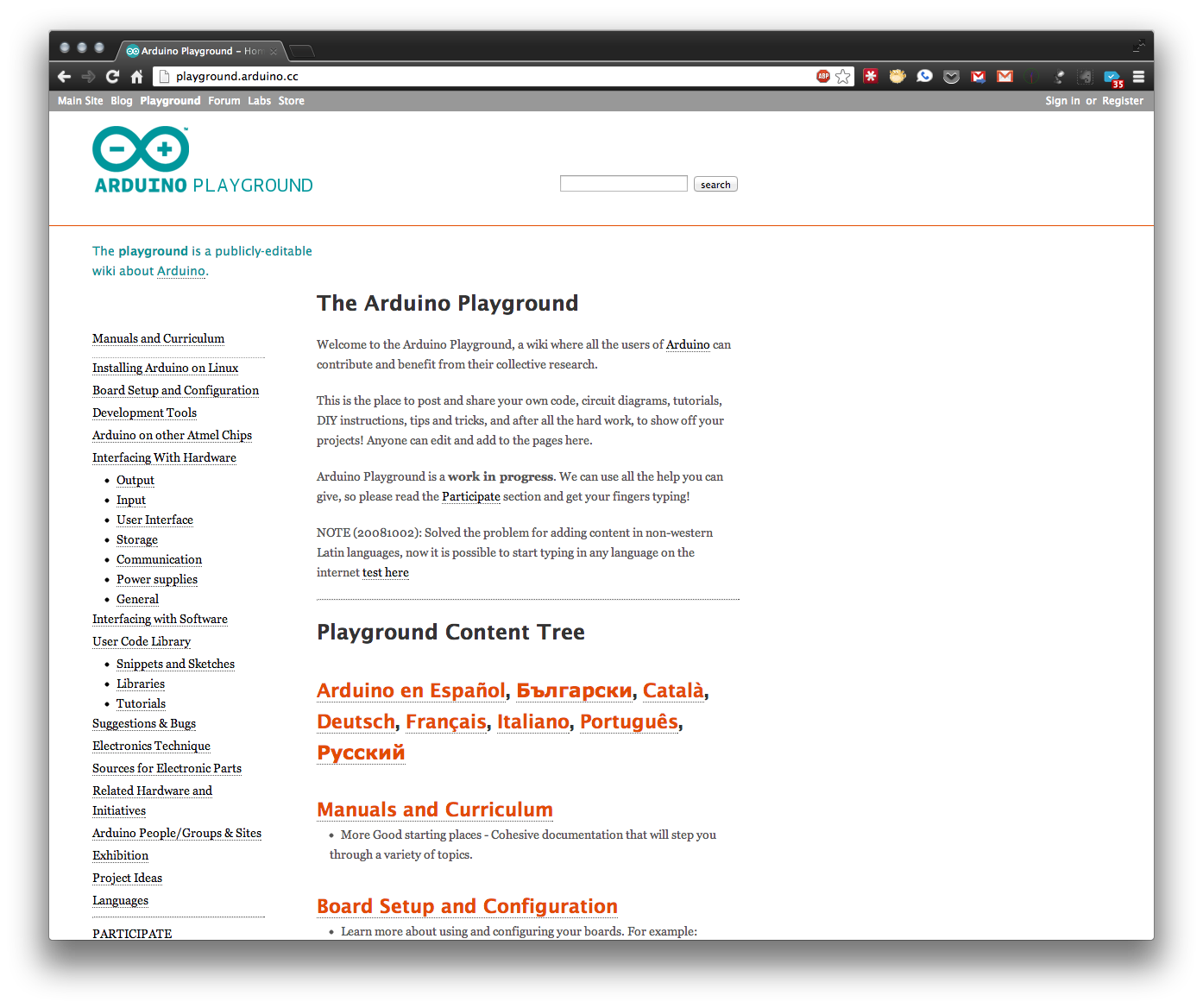The second chapter of Getting Started with Arduino is entitled "The Arduino Way." It briefly explains that the "Arduino Philosophy" is based on the following:
- Prototyping. Making actual, physical objects that do things in the fastest and most efficient way possible.
- Tinkering. Playing without a goal, especially with old or broken electronics, is time well spent.
- Patching. Making connections between different modules to direct data and control behavior. Robert Moog's early analogue synthesizers are mentioned as a prime example. (I like the cover of Switched on Bach in this respect.) Max, Pure Data, and VVVV are all mentioned as programming languages that make patching their primary visual metaphor.
- Circuit Bending. The creative short-circuiting of electronics – especially toys that talk or make sounds – to create music.
- Keyboard Hacks. Sort of the same idea but playing with the insides of a keyboard to make it do different things.
- We Love Junk! Because you can take it apart and do things with it. That's why I haven't thrown away my old hard drives or mystery power adapters yet.
- Hacking Toys. Lots of electronics in kids' toys to manipulate. The author (Massimo Banzi) recommends the PDF booklet "Low Tech Sensors and Actuators."
- Collaboration. There is, in fact, an Arduino community and they tend to post questions and answers and generally help each other. One interesting place for this is the "Arduino Playground" at playground.arduino.cc.
And that's it. Of course, any time somebody talks about their "philosophy," I always think of the choreographer Mark Morris. As the story goes, when he was being interviewed to be the artistic director of the Théâtre Royal de la Monnaie in Brussels, Belgium, he was asked about his philosophy of dance. He replied: "My philosophy of dance? I make it up. You watch it. End of philosophy." (And you'll be glad to know that he got the job, too!)
Completed:
- Getting Started with Arduino, 2e, Ch. 2: The Arduino Way (0 exercises)
- Sketches (i.e., code) can be downloaded from http://db.tt/f6x9Q4NA
Related articles
- Arduino making a mark at Maker Faire (atmelcorporation.wordpress.com)
- Arduino's Massimo Banzi's TED Talk (makezine.com)
- Arduino controlled Pocket Etch A Sketch Random Walk Simulation (instructables.com)

